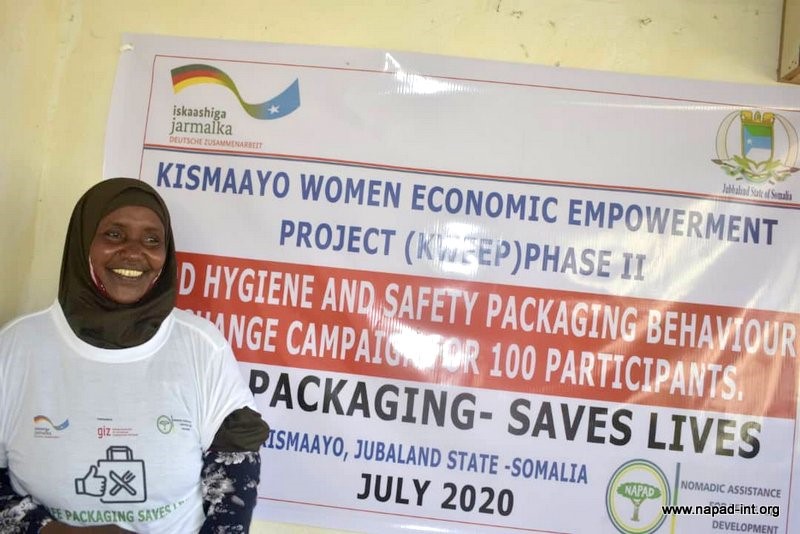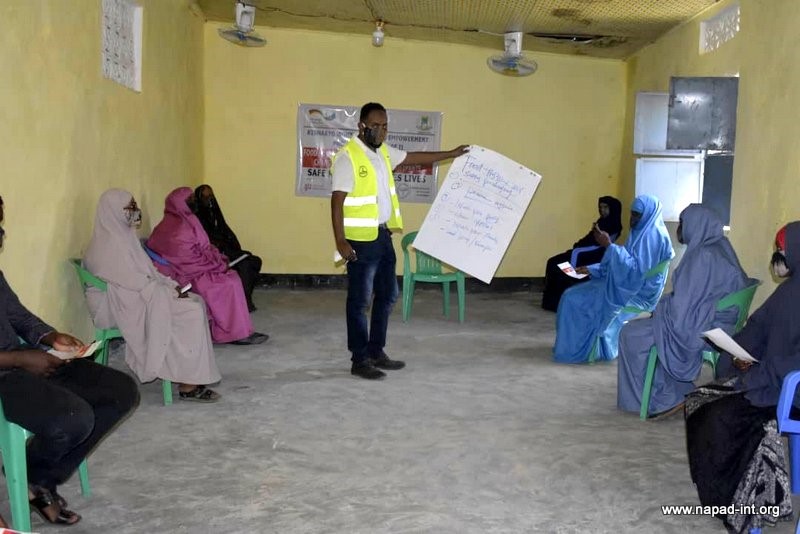Every day hundreds of traders and consumers flock into markets in Kismayu to purchase various commodities, especially food items. Bread and meat are a staple and typical food in Kismayu. Currently, meat and bread in Kismayu and broader Somalia is sold in the market while being openly displayed and unwrapped. The consumers/customers will pick their preferred product and carry it with whichever means they deem fit: including out in the open. The concept of packaging for these two products is practically nonexistent.
Somalia has a high AWD/cholera prevalence recording of 78,560 cases and 1,160 deaths from January to August 2020. Hygienic handling of food plays a vital role in preventing outbreaks of cholera and other hygiene-related diseases.

Awliyo Sankus is a 48-year-old beneficiary of the NAPAD-GIZ KWEEP phase 2, and an IDP living in Fanole IDP camp. She is a camel meat vendor at the Shaqalaha Mini market in Kismayo, where she fends for her entire eight family members.

Hygienically packaging food and ensuring food was handled safely, were relatively new skills for Awliyo. In June 2020, she participated in a behavior change campaign funded by Deutsche Gesellschaft für Internationale Zusammenarbeit (GIZ), working in collaboration with Nomadic Assistance for Peace and Development (NAPAD). The campaign sought to address two issues in Kismayu; proper food hygiene and safe packaging. 100 vendors of meat, fish, bread-processing enterprises, and retailed vegetable vendors from the five main Kismayo Villages, attended the two-day campaign.

The campaign was Awliyo’s first food hygiene and safety packaging awareness.
“It has taught us a lot because we learned hygiene practices on how to store our products in the shops and to ensure we package them accordingly, and with that, we avoid many diseases,” she continues. “Good packaging and maintaining hygiene will also attract more customers to our shops.”
The women also learned simple tips that can have a significant impact on food safety. “We learned that one could spread bacteria to food through touching your nose, mouth, hair, handling garbage and even handling animals and then handling the food,” Awliyo Sankuus said.
Safe packaging protects one’s product/food from physical damage, dust, as well as microbiological and chemical contamination. Proper food packaging should facilitate the transport of the product, prevent disease or loss, and protect it against damage or degradation.
She was thrilled to participate in a food hygiene and safety packaging campaign through behavior change. Awliyo believes that she will now be able to take care of herself and her customers after learning what food hygiene means to human well-being.
“I am now an advocate of safety packaging, saves lives,” she excitedly says.
